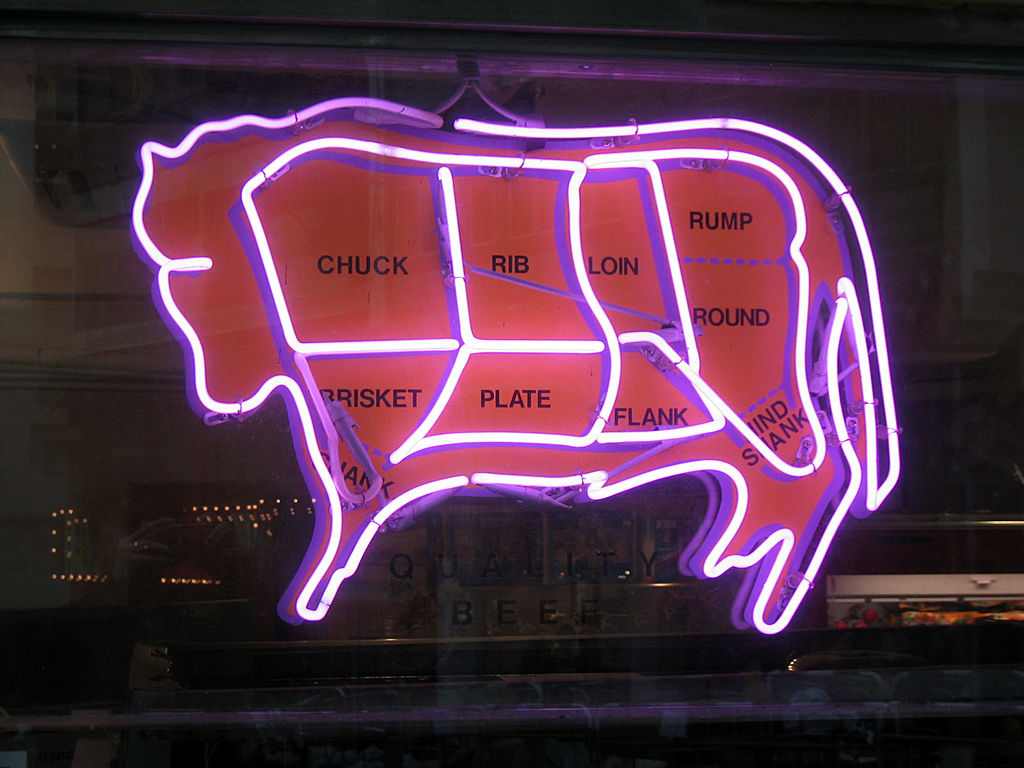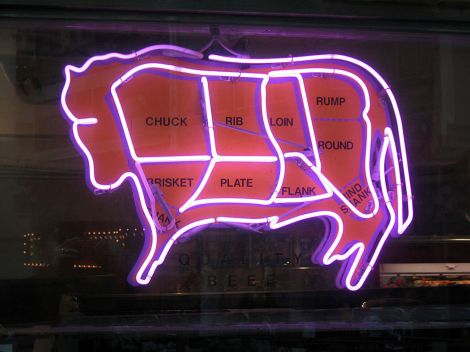If you had to choose a Public Enemy No. 1 for the food movement this year, pink slime would be a strong contender. This slurry of ammonia-soaked leftover “fatty trimmings” from industrial meat has been used in everything from school lunches to McDonald’s Big Macs. Now, after much public outcry, fast-food chains have dropped it, and the USDA has started to pay attention to its presence in school lunches.
But small-scale organic meat producers across the country are discovering something unexpected about pink slime: They actually like it.
Bob Chilliwack, an organic, grass-fed beef producer from Boulder, Mont., admits that pink slime adds a special something to a Big Mac that he couldn’t replicate in his own home-cooked burgers. “The trick is finding a way to produce it for our audience of eco-conscious customers,” Chilliwack says. “I don’t agree with most of what industrial agriculture does, but when it comes to the ‘lean, finely textured beef’ they achieve with pink slime, well, they’ve got it dialed.”
So Chilliwack set out to create a “sustainable pink slime” from leftover beef bits of his own pasture-raised cows. The result has an artisanal streak (natural cleaning products like white vinegar stand in for industrial ammonia), but it still retains the undeniable taste, tang, and texture of classic pink slime.
“Since we’re producing it in an all-natural, sustainable fashion, I’m calling it ‘green slime,’” he says. “Which I guess is a little confusing, since it’s still more of a bloody pink in color.”
Chilliwack isn’t alone. Others in the food movement are taking up the charge of creating their own brands of pink slime all over the country. And they all aspire to provide the same combination of all-natural ingredients and local flair they add to their pampered meats.
“Not having ammonia to work with makes it tough to achieve the same texture,” says Bryan Clegane, of Santa Fe’s Rio Grande Ranch. “But I find that if we can age our slime and work in a bit of natural gelatin, we approach the right mouthfeel. Additionally, we can apply our secret blend of 31 Southwestern spices to make sure our pink slime has the same fiery bite as our dry-aged ribeyes.”
Harder to replicate is Big Ag’s generous cocktail of antibiotics. While it’s hard to identify any flavor or texture directly associated with it, true connoisseurs usually say they can detect its absence. To make up for it, ranchers and artisanal butchers have tried adding various amounts and combinations of natural antibiotics like tea tree oil, echinacea, and colloidal silver. But few are satisfied with the result.
“Sometimes you just can’t imitate the lingering aftertaste of a really nice cephalosporin,” said Chilliwack.
But not all local meat producers are convinced. Jamie Stark owns Portland, Ore.’s The Beefery, a high-end butcher shop with connections to several lauded ranches within a 100-mile radius of the city. He takes a jaded view of the local meat industry aping anything pioneered by industrial agriculture.
“What are you, some kind of idiot?” he replied in a telephone interview. “Pink slime without ammonia or antibiotics already exists. It’s called sausage.”
Related:
- April fooled? See if you can spot real news among made-up stories.




